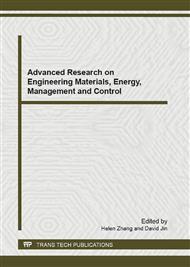p.318
p.324
p.330
p.334
p.338
p.342
p.347
p.352
p.355
Evaluation of Rolling Bearing Vibration Using Fuzzy Set Theory and Chaos Theory
Abstract:
The optimal fuzzy similarity coefficient based on the phase space is proposed to evaluate the rolling bearing vibration acceleration generated by wear on the surface of the ring raceway. The phase space of the time series of the rolling bearing vibration acceleration is reconstructed via the chaos theory, the fuzzy similarity relation between the phase trajectories is established by the fuzzy set theory, and then the optimal fuzzy similarity coefficient is obtained through a reasonable choice of the embedding dimension and the delay. Experimental investigation shows that with the increase of the fault diameter, the optimal fuzzy similarity coefficient decreases nonlinearly
Info:
Periodical:
Pages:
338-341
Citation:
Online since:
January 2012
Authors:
Price:
Сopyright:
© 2012 Trans Tech Publications Ltd. All Rights Reserved
Share:
Citation:


